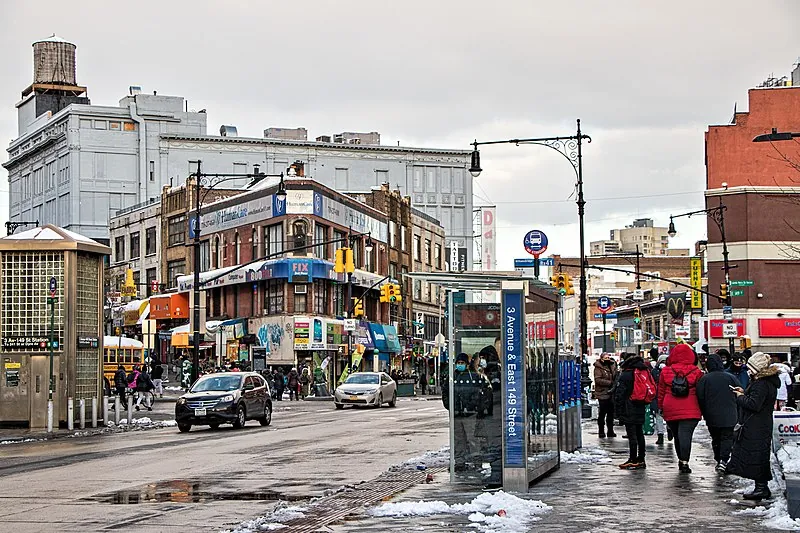This New York City Has Been Named the Highest Cancer Rates in the State
According to the New York State Cancer Registry, the five boroughs of New York City consistently have the highest cancer rates in the state. In 2020, the most recent year for which data is available, the age-adjusted incidence rate of all cancers in New York City was 524 per 100,000 people, compared to 465 per 100,000 people statewide.
The Bronx has the highest cancer rate of any borough, with an age-adjusted incidence rate of 556 per 100,000 people. Staten Island has the lowest cancer rate of any borough, with an age-adjusted incidence rate of 492 per 100,000 people.
The following are the age-adjusted incidence rates of all cancers for each borough in 2020:
- The Bronx: 556 per 100,000 people
- Brooklyn: 534 per 100,000 people
- Manhattan: 520 per 100,000 people
- Queens: 512 per 100,000 people
- Staten Island: 492 per 100,000 people
Contributing Factors to High Cancer Rates
Multiple factors contribute to the high cancer rates in New York City, painting a complex picture of this health crisis:
- Smoking: Smoking is a leading cause of preventable cancer death, and New York City grapples with a high smoking rate. Shockingly, 12% of adults in the city continue to smoke cigarettes. This habit is a known risk factor for lung cancer, as well as other cancers like bladder, cervical, esophageal, kidney, and pancreas cancer.
- Obesity: Obesity is another significant risk factor for various types of cancer, and the city struggles with a high obesity rate. A staggering 28% of adults in New York City are obese, increasing their susceptibility to endometrial, kidney, esophageal, postmenopausal breast, and colon and rectum cancer.
- Environmental Exposures: New Yorkers are constantly exposed to environmental toxins, including air pollution and secondhand smoke, which can elevate cancer risk. New York City contends with some of the worst air pollution in the country, potentially exposing its residents to harmful chemicals like benzene, formaldehyde, and lead, all of which are linked to increased cancer risk. Additionally, secondhand smoke, a known carcinogen, affects over 1.6 million people in their homes.
- Socioeconomic Factors: People living in low-income neighborhoods face a higher likelihood of exposure to environmental toxins and have limited access to healthy foods and healthcare, further raising their cancer risk. Disturbingly, individuals in the poorest neighborhoods of the city are twice as likely to die from cancer as those in the wealthiest neighborhoods, according to data from the New York City Department of Health and Mental Hygiene.
- Access to Healthcare: Limited access to healthcare is a significant obstacle to early cancer detection and effective treatment. In New York City, over 500,000 adults are uninsured, making it harder for them to receive preventive screenings, resulting in late-stage diagnoses and poorer treatment outcomes.
Addressing the Issue
The New York State Cancer Registry recognizes the gravity of the situation and is actively working to address the high cancer rates in the state through various measures:
- Identifying Cancer Risk Factors: The registry diligently collects data on cancer rates and risk factors, enabling the development of effective prevention and control programs.
- Promoting Cancer Screening: Encouraging cancer screening is a pivotal aspect of the registry’s efforts, as early detection can lead to more successful treatment outcomes.
- Improving Access to Cancer Care: The registry aims to enhance access to cancer care for all New Yorkers, ensuring that quality treatment is available to those who need it.
Individual Prevention Strategies
While collective efforts are crucial, individuals can also play a pivotal role in reducing their cancer risk. Here are some steps that can be taken:
- Quitting Smoking: Smoking cessation is the single most important step individuals can take to reduce their cancer risk. Seeking support and resources to quit is essential.
- Maintaining a Healthy Weight: Eating a balanced diet and engaging in regular exercise can help individuals maintain a healthy weight, decreasing their susceptibility to cancer.
- Limiting Exposure to Environmental Toxins: Individuals can minimize their exposure to harmful environmental toxins by avoiding smoking, residing in areas with good air quality, and reducing exposure to secondhand smoke.
- Regular Cancer Screenings: It is crucial for individuals to adhere to their doctor’s recommendations for regular cancer screenings. Early detection can make a significant difference in the treatment and prognosis of cancer.
In Conclusion
New York City’s status as the area with the highest cancer rates in the state demands attention and action. While factors such as smoking, obesity, environmental exposures, socioeconomic disparities, and limited healthcare access contribute to the problem, proactive measures are being taken to combat this health crisis. Individuals can also make a difference by taking steps to reduce their own cancer risk. By understanding the contributing factors and working together at both the community and individual levels, we can strive to make New York City a healthier and less cancer-prone place for all its residents.
Read More:







